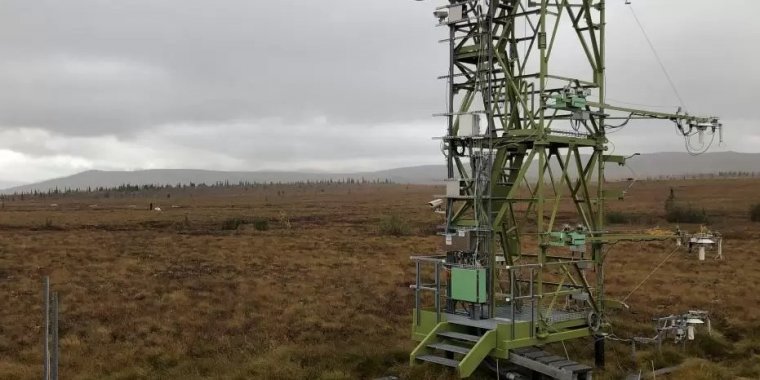| Science |
Unfrozen layers in dryland permafrost are unexpected source of methane
Permafrost is permanently frozen soil in the coldest areas of the planet. Although it has trapped organic carbon from the remains of plants and animals that died and froze thousands of years ago, rising temperatures are thawing the soil, releasing this carbon to microbes that convert it to methane, a potent greenhouse gas.

Healy (HEAL) is a terrestrial NEON field site located in central Alaska, 120 km (75 mi.) southwest of Fairbanks and at the northern border of Denali National Park. The 45.6 km2 (11,300 acre) site is managed by the Alaska Department of Natural Resources. It sits at an average of 678 m (2224 ft.) in elevation and is situated in a high-elevation, glaciated valley where the dominant vegetation consists of dwarf shrubs and sedge meadows. This valley experiences widespread permafrost thawing, making it a valuable resource to understand how other permafrost systems in Alaska may experience and react to thawing in the future. The site is open to the public for recreation including hunting, berry picking, snowmobiling, and dog sledding. HEAL is one of the four sites (three terrestrial and one aquatic) located in the NEON Taiga Domain (D19), which comprises Alaska’s interior and the Alaska Peninsula. Photo: NEON operated by Battelle.
A new study reveals that dryland permafrost’s unfrozen layers, called taliks, produce an unexpectedly large amount of methane, raising concerns about its potential to exacerbate climate change in the fragile Arctic environment.
Katey Walter Anthony and her team at the University of Alaska Fairbanks investigated methane emissions from taliks in the yedoma uplands.
Yedoma is an ice age permafrost known for frozen mammoth remains; it is abundant from northeast Siberia to Alaska and Canada.
Anthony found that dry, upland taliks have unexpectedly large methane emissions, nearly three times higher than northern wetland emissions.
Unlike traditionally researched permafrost, the talik in the uplands was discovered to emit higher amounts of methane in winter when compared to summer emission levels.
With Arctic air temperature increasing nearly four times faster than the global average, this methane release represents a concerning factor that could create a positive feedback loop with increasing temperature and increasing permafrost thaw in the region. (U.S. National Science Foundation)
YOU MAY ALSO LIKE





